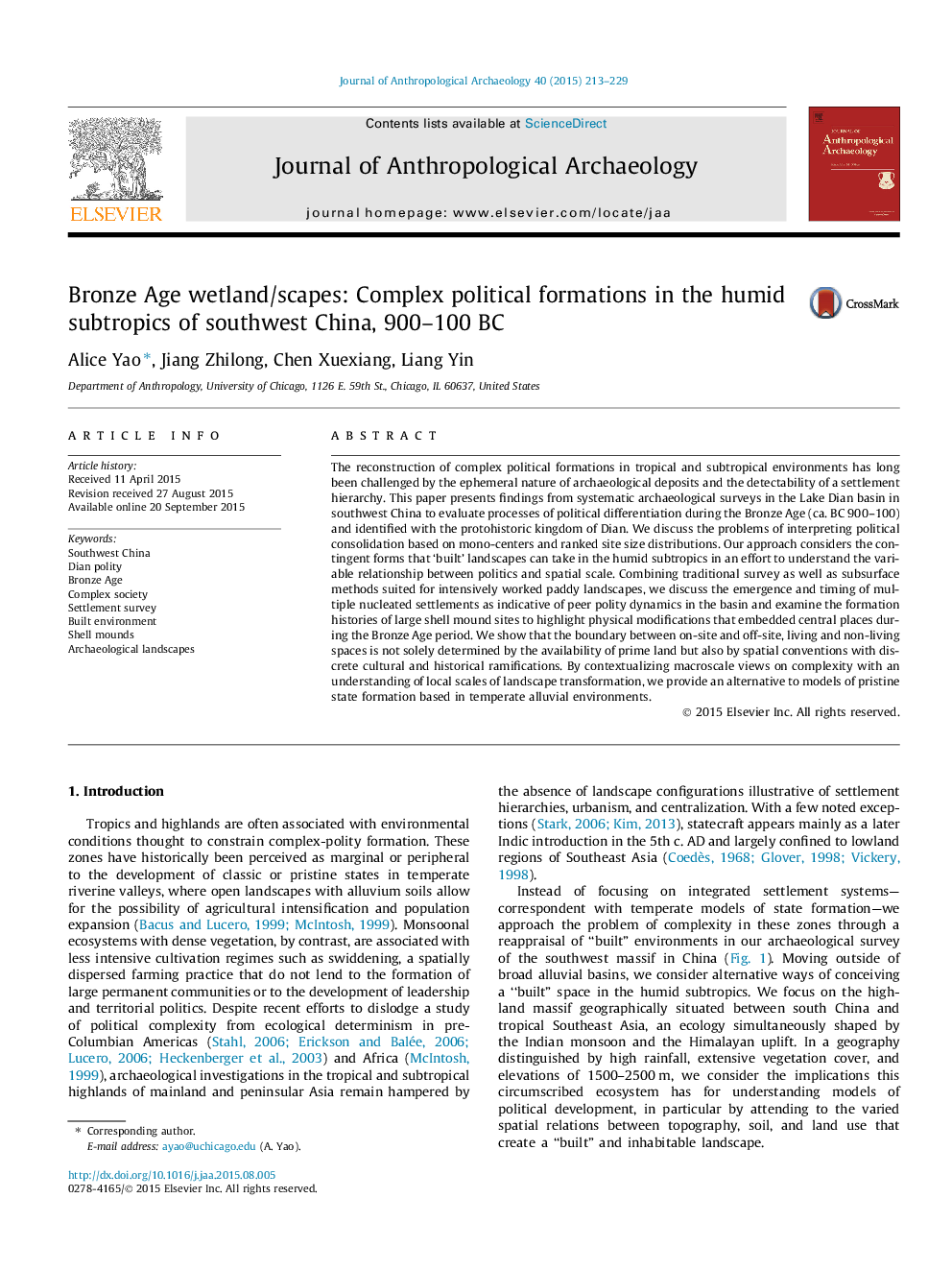| Article ID | Journal | Published Year | Pages | File Type |
|---|---|---|---|---|
| 7440542 | Journal of Anthropological Archaeology | 2015 | 17 Pages |
Abstract
The reconstruction of complex political formations in tropical and subtropical environments has long been challenged by the ephemeral nature of archaeological deposits and the detectability of a settlement hierarchy. This paper presents findings from systematic archaeological surveys in the Lake Dian basin in southwest China to evaluate processes of political differentiation during the Bronze Age (ca. BC 900-100) and identified with the protohistoric kingdom of Dian. We discuss the problems of interpreting political consolidation based on mono-centers and ranked site size distributions. Our approach considers the contingent forms that 'built' landscapes can take in the humid subtropics in an effort to understand the variable relationship between politics and spatial scale. Combining traditional survey as well as subsurface methods suited for intensively worked paddy landscapes, we discuss the emergence and timing of multiple nucleated settlements as indicative of peer polity dynamics in the basin and examine the formation histories of large shell mound sites to highlight physical modifications that embedded central places during the Bronze Age period. We show that the boundary between on-site and off-site, living and non-living spaces is not solely determined by the availability of prime land but also by spatial conventions with discrete cultural and historical ramifications. By contextualizing macroscale views on complexity with an understanding of local scales of landscape transformation, we provide an alternative to models of pristine state formation based in temperate alluvial environments.
Related Topics
Social Sciences and Humanities
Arts and Humanities
History
Authors
Alice Yao, Jiang Zhilong, Chen Xuexiang, Liang Yin,
